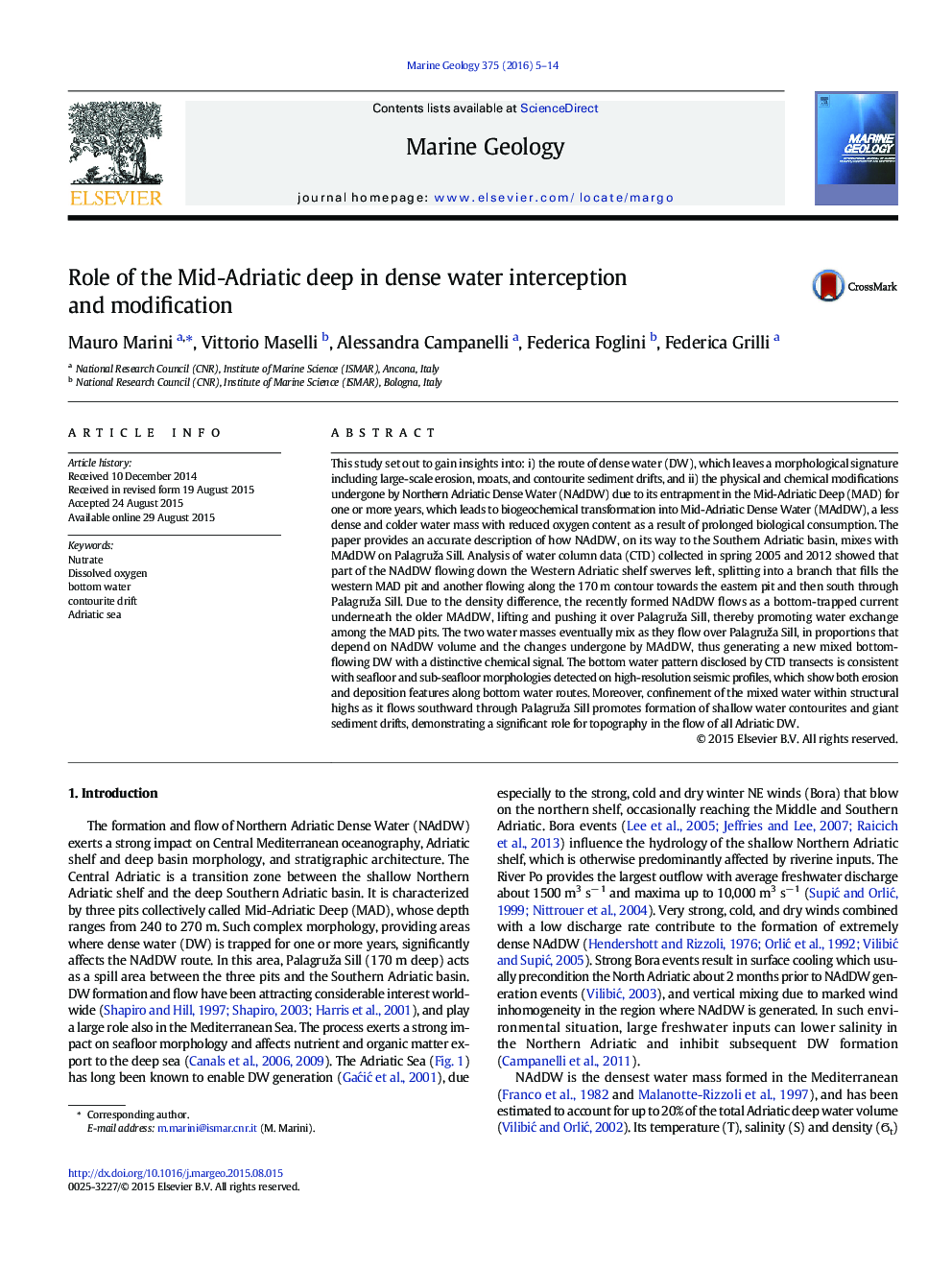| Article ID | Journal | Published Year | Pages | File Type |
|---|---|---|---|---|
| 4718136 | Marine Geology | 2016 | 10 Pages |
•The Mid-Adriatic Deep (MAD) is a crucial transition zone between the Northern Adriatic shelf and the Southern Adriatic basin.•Northern Adriatic Dense Water (NAdDW) flows into the MAD, promoting Middle Adriatic Dense Water outflow into Palagruža Sill.•A mixed NAdDW-MAdDW flow reaches the Southern Adriatic basin through Palagruža Sill•3D bathymetry and high-resolution seismic profiles help determine dense water routes and their impact on the seabed.
This study set out to gain insights into: i) the route of dense water (DW), which leaves a morphological signature including large-scale erosion, moats, and contourite sediment drifts, and ii) the physical and chemical modifications undergone by Northern Adriatic Dense Water (NAdDW) due to its entrapment in the Mid-Adriatic Deep (MAD) for one or more years, which leads to biogeochemical transformation into Mid-Adriatic Dense Water (MAdDW), a less dense and colder water mass with reduced oxygen content as a result of prolonged biological consumption. The paper provides an accurate description of how NAdDW, on its way to the Southern Adriatic basin, mixes with MAdDW on Palagruža Sill. Analysis of water column data (CTD) collected in spring 2005 and 2012 showed that part of the NAdDW flowing down the Western Adriatic shelf swerves left, splitting into a branch that fills the western MAD pit and another flowing along the 170 m contour towards the eastern pit and then south through Palagruža Sill. Due to the density difference, the recently formed NAdDW flows as a bottom-trapped current underneath the older MAdDW, lifting and pushing it over Palagruža Sill, thereby promoting water exchange among the MAD pits. The two water masses eventually mix as they flow over Palagruža Sill, in proportions that depend on NAdDW volume and the changes undergone by MAdDW, thus generating a new mixed bottom-flowing DW with a distinctive chemical signal. The bottom water pattern disclosed by CTD transects is consistent with seafloor and sub-seafloor morphologies detected on high-resolution seismic profiles, which show both erosion and deposition features along bottom water routes. Moreover, confinement of the mixed water within structural highs as it flows southward through Palagruža Sill promotes formation of shallow water contourites and giant sediment drifts, demonstrating a significant role for topography in the flow of all Adriatic DW.
